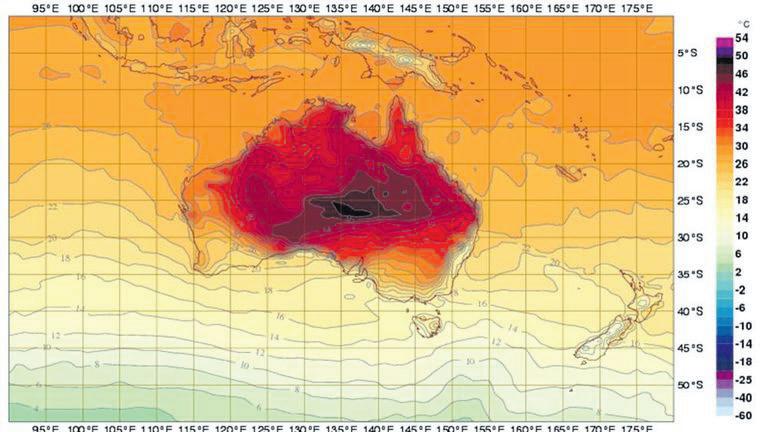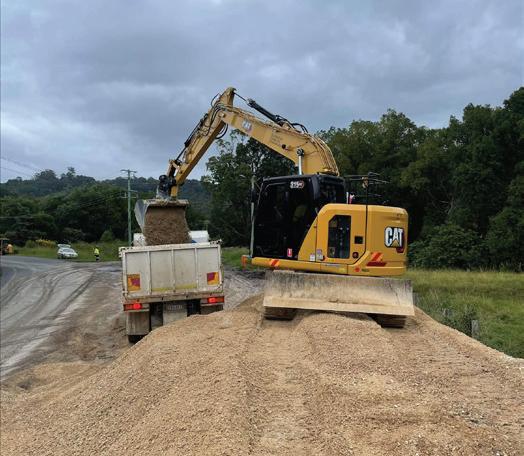
3 minute read
Weather Outlook
The past week saw severe Tropical Cyclone (TC) Ilsa bring heavy rainfall across remote areas of central Australia, with higher totals near the Pilbara coast in Western Australia. The remnants of TC Ilsa combined with a cold front, leading to heavy rainfall being recorded across south-eastern Australia.
Troughs in the tropical north resulted in rainfall across the Northern Territory’s Top End and the Cape York Peninsula in Queensland.
Cropping regions saw rainfall totals of between 15 and 50 millimetres, across eastern Western Australia, northern Queensland, southern New South Wales, much of Victoria, and western and central South Australia.
Unfortunately, other regions of the cropping area had little to no rainfall. This lack of rain was also felt around the world, as average to below average rainfall during March is likely to result in lower-thanexpected winter wheat production potential in the United States and Ukraine. Corn and soybean production across Argentina and southern Brazil have also been negatively affected, this providing a deterioration in global production conditions compared to those seen in March, which were used to formulate ABARES forecasts of global grain supplies and the impact on world prices in its March edition of Agricultural commodities.
As a result, global coarse grain and oilseed production is likely to be lower than that forecast in March. Looking ahead to the next 8 days, a high-pressure system limit of two trout applies to the Thredbo and Eucumbene rivers from 1 May to the end of the King’s Birthday long weekend on Monday, June 12, 2023.
“Fishers can only use one rod and line at a time, rigged with up to two artifcial fies or lures and they can possess up to three rods, rigged with artifcial fies or lures, however the use and possession of handlines is not permitted, and is expected to keep much of the country generally dry. However, a trough in the north will trigger storms across the Top End and northern Queensland. Meanwhile, cool onshore winds are expected to bring showers over eastern New South Wales and southeast Queensland. A trough and front crossing southeast Australia should bring showers over Victoria, southeast South Australia and western Tasmania. Rainfall totals of up to between 10 and 25 millimetres are expected for southern New South Wales, and much of Victoria and South Australia in the next eight days. Little to no rainfall is expected for the remaining cropping regions. any fshing gear rigged for bait fshing is also prohibited.
Where rain does fall, it will help build soil moisture levels in the lead up to the winter cropping season and also beneft pasture growth rates and availability.

“DPI Fisheries Offcers will be patrolling the Thredbo and Eucumbene rivers to ensure that fshers abide by the rules and fshers are encouraged to respect each other and be sure to leave the area as pristine as it was found.”
The public is urged to report illegal or suspected illegal fshing activities to the Fishers
Watch Phoneline on 1800 043 536 or via the online report form. For more information on fshing rules and bag limits, please visit the DPI website
Dry conditions elsewhere would allow harvest and planting activities to progress.
Water storage levels in the Murray-Darling Basin (MDB) remained steady at 89 percent of total of capacity between 13 April 2023 and 20 April 2023. Current volume of water held in storage is 19 956 GL, which is 2 percent or 306 GL more than at the same time last year. Allocation prices in the Victorian Murray below the Barmah Choke decreased from $13 on
13 April 2023 to $11 on 20 April 2023. Prices are lower in the Murrumbidgee and regions above the Barmah choke due to the binding of the Murrumbidgee export limit and Barmah choke trade constraint. Overall, it has been a challenging week with regards to global grain production and rainfall in Australia. There has been a lack of rainfall across much of the country, with areas in central Australia seeing the most rainfall. The next week is looking to be drier, which will allow for harvest and planting activities to progress for those areas that have not received any rainfall.

Water storage levels in the Murray-Darling Basin remain steady and allocation prices in the Victorian Murray have decreased. It is important that we continue to monitor rainfall patterns and global grain production in order to better understand the impact it has on agricultural commodities.











